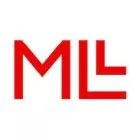- with readers working within the Banking & Credit and Insurance industries
With the growing universe of blockchain based systems and applications, legal questions associated with this technology emerge and require consideration (ideally) before substantial sums are invested. In this blog series related to blockchain, we have covered a number of legal aspects (such as Starting an Initial Token Offering (ITO, also called Initial Coin Offering or ICO) - Things to consider and Blockchain for Patents - Patents for Blockchain) already.
This blogpost is about copyright in the blockchain environment.
Traditionally, copyright protects works of authorship, such as literary or musical works, from unauthorised reproduction (copying, alteration etc.).
Now how is this possibly relevant in the context of blockchains? The answer is: software code.
Many countries' copyright laws protect software code (source and object code) against unauthorised reproduction or alteration. This and possible patents are the reason why you have to accept a license agreement any time you install an app on your mobile phone or a new software on your computer. By this license, the copyright owner grants you the right to use the software in a way that would otherwise be prohibited by copyright law (e.g. installing the software amounts to copying).
Technical and Legal Considerations
Since blockchains (distributed ledgers) and related applications come in a wide variety of implementations, we will only address a few main principles here. Different "pieces" of software can be identified such as
- the blockchain software (implementing the blockchain, such as Bitcoin or Ethereum core)
- Middleware
- Applications integrating with / using the blockchain
- Smart contracts deployed on a blockchain
Since it is the very purpose of blockchains to be computed on a network of different computers, copying the core and all code contained in the blockchain is system-immanent. Moreover, many blockchain projects live from contributions by "the community". Now, what rules govern the use, alteration or copying of such software?
Most public known blockchain projects are open source projects. Open source means that software is licensed under distribution terms that comply with certain criteria (such as access to source code, free redistribution, permission to make modifications and derivative works, no discrimination rules etc., see e.g. the widely used Open Source Definition of the Open Source Initiative).
There is a large number of different open source licenses with significantly different terms (some prominent licenses used for blockchain projects are GNU General Public License, GNU Lesser General Public License [LGPL], Apache License 2.0, MIT license). These licenses impact the way of how the software proliferated under the license may be used, modified and redistributed. Particular attention needs to be paid to the redistribution rights and obligations because several open source licenses require that software or at least the derivative part of the software incorporating the open source software is redistributed again under the same open source terms ("copy-left", GNU and LGPL).
An example of a basic conflict is reported in an article on the website of ETH News. In essence, Hyperledger "considered hosting projects that would be designed to connect to the ETH chain as a client or be built on top of the Ethereum platform. They attempted to solidify this collaboration by incorporating Ethereum C++ (cpp-ethereum) into Hyperledger but to do so, the C++ iteration would first have to be relicensed before being absorbed." The main reason for this incompatibility was different open source licenses with conflicting terms: Ethereum C++ was licensed under GPL-3, while Hyperledger uses Apache 2.0, which would have required a relicensing of the Ethereum C++ client to the Apache 2.0 license.
The example above also demonstrates that changing a license to another license may become burdensome if not impossible, since this requires consent of the contributors and the number of contributors to blockchain projects can be significant (and contributions can be made under an alias; see the article in the International Business Times).
Surprisingly, though, finding easily accessible and reliable information (other than in the code) about the licensing terms of prominent blockchain projects is a rather cumbersome task. However, it is key to make a proper investigation before starting an own project to avoid unpleasant surprises.
Originally published on 21 September 2017
The content of this article is intended to provide a general guide to the subject matter. Specialist advice should be sought about your specific circumstances.


